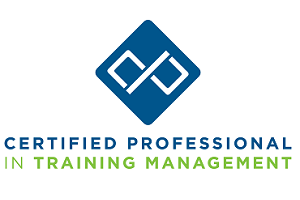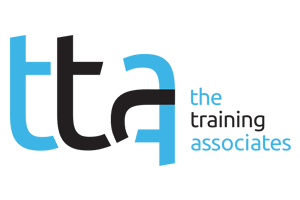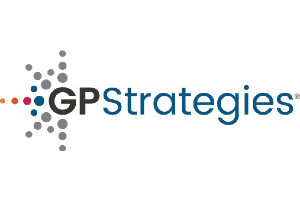Did you know that “surprise” is the key emotion for you to use if you want to unlock true audience engagement?
Engaging your audience has always been key. But the way people pay attention to things and how they consume content has changed and we need to map to it. The days of presenting static, one-way presentations are nearly gone.
Unlocking Engagement: The Power of Surprise in Audience Interaction
If we want to truly engage our audience as trainers, we need to understand how engagement works in the human brain. Evidence from research into neurobiology suggests that being engaged is to feel curiosity — a desire to know more. This comes from feeling a mix of surprise, excitement and trust.
Surprise is important because it is the only emotion that can switch our emotional state from negative emotions (e.g., anger, fear, sadness, etc.) over to attachment emotions (e.g., love, joy, excitement, etc.)
If someone is surprised by something you tell them, or show them, then they are going to be curious as to: What can I learn here that will help me in the future? If that is then backed up with the information, tools and practice to help them achieve it (and if they trust you can help them do it), then excitement and engagement follow.
So, we need to think about having a surprising element early on in the training experience. This could take many forms. For example, many years ago I was tasked with taking a group of busy people to determine how we could make the marketing department more creative. I didn’t give people too much information ahead of time, and I chose to have the kick-off meeting in a cathedral and a meeting room in the cloister next door.
It was a surprising location that totally got everybody curious to learn more. The same goes for information. Maybe you read the first line of this article and felt the curiosity to learn more.
Capturing and Sustaining Attention: The Key to Effective Learning
The important thing about our audience is how they pay attention to content and experiences these days.
“Our attention spans are really short” … this is a common misconception. After all, how can we go watch a movie for two hours and not move a muscle? Well, Hollywood figured out that short scene lengths, lots of “jump cuts” and shaky camera effects are the key to spiking dopamine in our brains and making us pay attention. In other words? Movement is the gateway to sustaining our attention.
If you want to capture and keep your audience’s attention, then you need to change up your training delivery format — often. No one-way presenting for too long, nothing on the screen for too long, no keeping your voice at the same tone.
Now, our audiences need us to vary how we present content, have more conversations with them and the other attendees, use different content formats and more. Your learners still want to receive useful, exciting and relevant information from us via presentations, but the delivery method needs to change. “Conversational presenting” is one solution here.
Crafting Conversational Presentations
If you are of a certain age like me, you might remember reading “Choose Your Own Adventure” books growing up. In these books, the story is written from a second-person point of view, where the reader assumes the role of the hero and makes choices that determine the main character’s actions and the plot’s outcome. At the end of each page or chapter you would choose what to do next and turn to that page in the book.
Conversational presenting follows the same idea. You have all of your content in your presentation, but you don’t present it in a linear way. The audience decides what you experience and in which order.
This is a powerful method for discovering your audience’s wants and needs. It’s this idea that the conversation will control the presentation (i.e., the new way), not the presentation controlling the conversation (i.e., the old way).
You can also spike attention (i.e., dopamine) even more by saying, for example, “We have seven things we could cover in this training today, but we only have time for five. What is most important to the group?” This is a very potent way to get people to engage, focus and converse.
The Importance of Active Listening
Listening is more than hearing. It’s understanding and responding.
Two years ago, I joined an improv comedy class and have been learning this fun and exciting hobby ever since. There are many skills I’ve learned that apply to presentations and communication but perhaps the most valuable has been active listening.
In improv you have to let go of your inner monologue, get out of your head and truly focus and listen to your scene partner. You can’t listen for five seconds and then go into your thoughts and plan what you say. Doesn’t work. You have to fully listen to the end of what the other person is saying, and only then can you respond.
I discovered that not only does this make me a better scene partner, but when it comes to conversational presenting it makes me a better communicator and presenter. I have more confidence and courage to not be scripted and stick to the plan, but to really engage with my audience and then only present if relevant and what’s relevant.
The Art of Asking the Right Questions
Questions ignite curiosity and drive interaction. We can also use questions to drive huge learning experiences. At the beginning of your session using a question to get a discussion going that primes the session for your learning can be super powerful.
Use question formats such as:
- Intriguing scenarios: For example, “Imagine if you could transform one aspect of your daily work routine to be more efficient. What would it be and why?”
- Reflective questions: For example, “Can anyone share a recent work challenge where you wished you had [insert training program focus] skill or approach?”
- Personal connections: For example, “What’s one skill or knowledge area you’re hoping to improve that brought you here today?”
- Interactive challenges: For example, “What is it about [insert training program focus] skill or concept you’ve always found challenging?”
You can also ask rhetorical questions that highlight common challenges or emphasize the importance of a skill or underscores a common issue or pointing out a universal truth.
A New Dawn in Training Engagement
Learner engagement hinges on a potent blend of surprise, excitement and trust.
Conversational presenting can be a way to build this blend, transforming routine sessions into interactive journeys of discovery. It’s about shifting from mere presentation to meaningful conversation, where every exchange sparks curiosity and cements understanding through active participation.
As you step into the future of corporate training, my call to arms would be to embrace and try out this transformative approach. There is no “one-size-fits-all” solution to anything, but if you experiment with letting surprise invigorate your sessions, letting active listening deepen connections, and letting thoughtful questions provoke engagement, I believe it can reap huge rewards.





